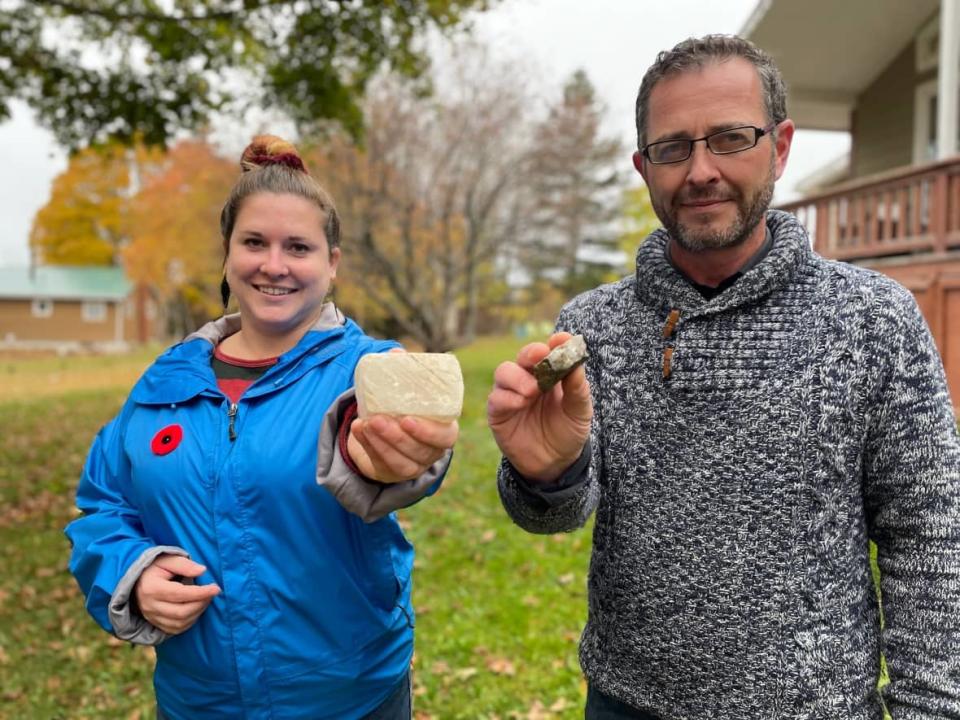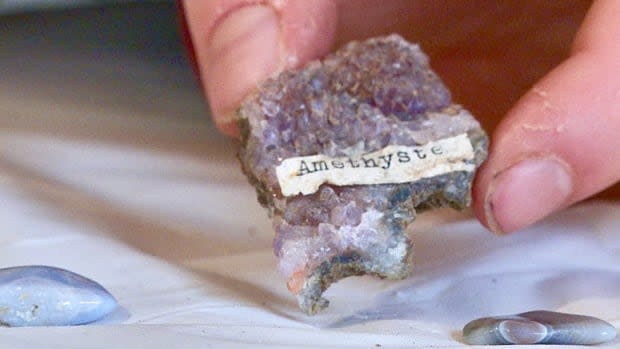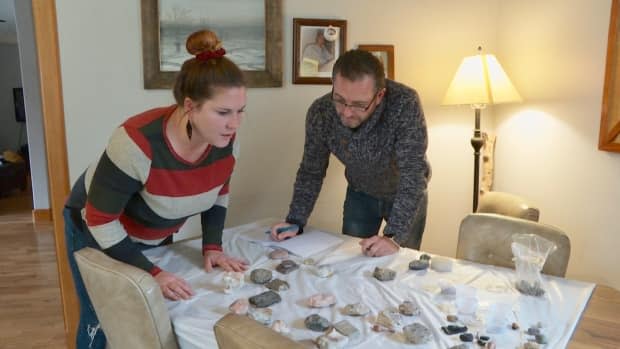Geologist helps Stratford man identify late neighbour's rock collection

Who was the Peter Griesbauer who immigrated from Germany to Stratford back in 1973?
Well, his friend describes him as an avid traveller. His obituary says he was a sailor. His possessions suggest, perhaps, a collector.
"When I first saw this collection when he was alive, he just said they were a bunch of rocks, but I think they meant a lot more than that to him," said Wayd McNally, a former neighbour.
"In Peter's passing, the family asked me if I wanted anything — and one of the things that I decided that I would take is this rock collection."
Around 40 stones were lined up on McNally's kitchen table Wednesday, some gritty with hidden minerals poking out the side, others polished with numbers drawn on them. Each one provided a touch of insight into Griesbauer's life.
"These rocks were representative of his travels and some of the things that he was interested in," said McNally.
"I always wondered the history behind these rocks because I think those rocks were really a piece of him and would explain a lot about where he went and what he did in his lifetime."
What was in the collection?
For years, the collection sat untouched in the basement. Recently, McNally became curious. What was actually in that collection, and where did it come from?
"When I first saw the rock collection, I was really interested because I saw a lot of really beautiful colours and crystal shapes," said Laura MacNeil, a geologist and founder of Prehistoric Island Tours.
"There was only one thing in this collection that could possibly be from Prince Edward Island. That was a piece of fossilized wood."

MacNeil suspected the collection also included:
Coal: "You'd need about 10 metres of plants to get about one metre of coal."
Calcite: "Basically any creature living in the ocean that has a hard body part is usually made up of calcite."
Scoria: also known as "lava rock that has a lot of bubbles in it."
Pyrite: "Also called fool's gold."
Tremolite: "This would have formed perhaps when two continents collided together."
Sodalite, olivine, gypsum, plagioclase, amethyst, tiger's eye, slate and some not even MacNeil could identify easily.
'He'd just be so happy'
As she checked over each piece, McNally took notes.
"He wasn't somebody that drove a fancy car. He was somebody that kept small treasures," he said.
"I'm just really pleased that we now are able to think back about what he did in his lifetime and really think every time we see these rocks, you know there's a little bit of Peter there."

McNally said he plans to put his old neighbour's collection on display and pass the information he learned Wednesday on to his children.
"I think he'd just be so happy that it still exists, that what he collected is being treasured," said McNally.
"It's just a great gift, great history and great knowledge ... I think that that would make him extremely happy."
MacNeil said although she'll never get the chance to meet Peter, she too learned a little more about the man who found each stone.
"I would love to hear every individual story that is behind each one of these rocks," she said.
"There is a story behind each one, not just a geological story, but Peter's story … where he found these, how he came across them and how he collected them."

